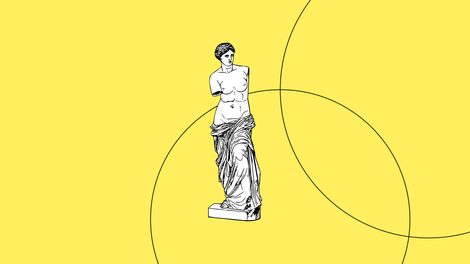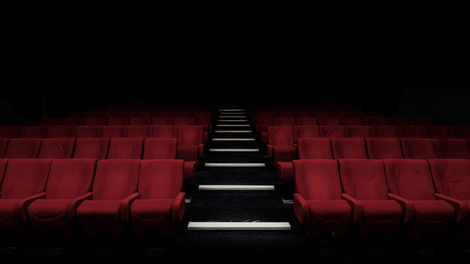Did you hear about the AI artwork made with Midjourney that won an art prize? This begs a few questions: Is the creator really a digital artist? Or is he a curator? Perhaps he's just a guy who wrote prompts for an AI image machine and entered an art competition?
Whatever you think of an AI-generated image winning a digital art prize, it's undeniable that artificial intelligence is making an impact on the art world.
But AI is only one facet of the digital art scene, which is growing and becoming increasingly populated with creators from all walks of life (and artificial life, as we've seen above). We’re investigating how AI affects artists, the true value of NFTs, the potential for 3D and holographic art in the 21st century, and other technologies for creative work.
Artists have embraced computer technology ever since it became available in the 1950s, and upon taking a closer look, you'll realize that computer art is not as new as you might think.
Jumpstart your ideas with Linearity Curve
Take your designs to the next level.
Pre-digital art
A few notable creative technologies preceded the digital age and impacted the trajectory of artistic work. It's interesting how artists have used these pre-digital technologies to make artwork, and how many of these analog technologies were later translated into a digital format.
Changing the artist's perspective: early devices
Technological advancements have invariably led to new developments in art and design. Throughout the ages, artists have always been interested in new ways to make images and express how they see the world. New technologies also help artists to be more productive and accurate image makers.
Three of the earliest analog optical devices used by artists are the camera obscura, camera lucida, and phenakistoscope, which are predecessors to photography and animation.
A device used since classical times (as far back as the 4th century), the camera obscura was a pinhole camera that could take up an entire room. It was used to project a scene onto a surface so the artist could copy it. Later, photography introduced a mechanical way for the artist to capture images in a box (sounds a lot like a computer, right?).
The camera lucida was a device with either a mirror or a prism inside that enabled the artist to look down on their drawing surface and see the scene in front of them simultaneously. It allowed the artist to draw perspective and proportions more accurately. Camera lucidas are still available today but are less popular than in the early 1800s when the device was first patented.
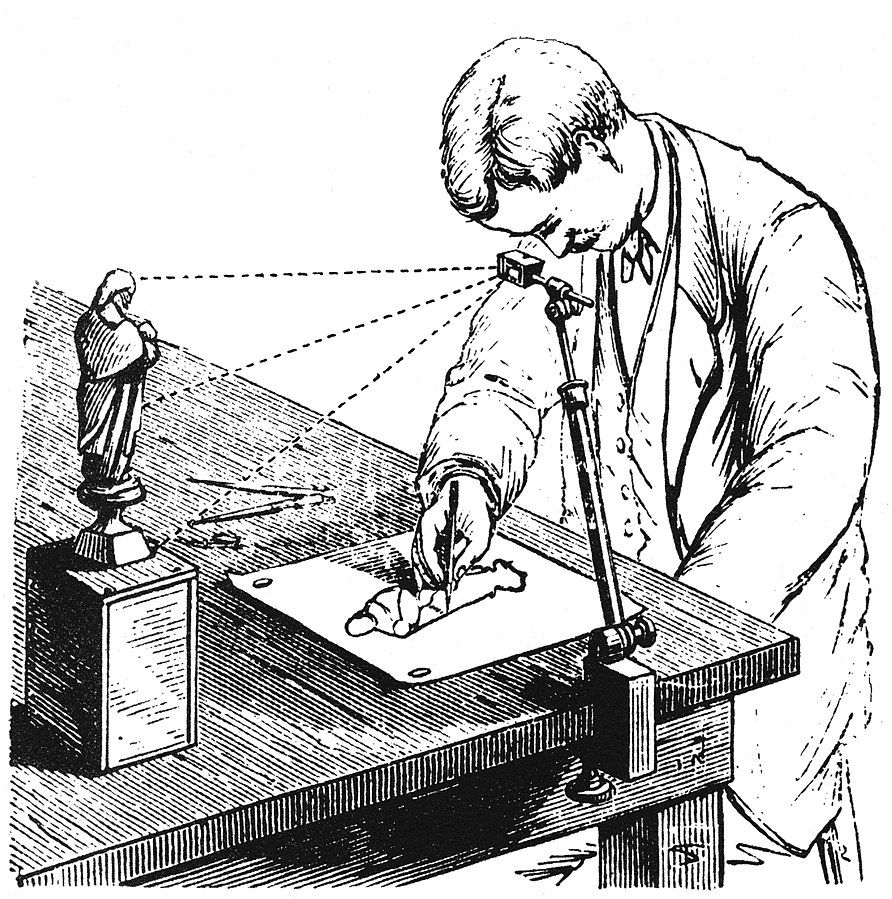
Phenakistoscopes and related optical devices, such as stroboscopes and zoetropes, were invented in the 1830s to create the illusion of movement through the rotation of a series of drawings. Stereoscopes, the early versions of 3D imaging, were also invented in the 1830s.
We should also not forget the printing press, a paradigm-shifting pre-digital technology that made the mass reproduction and dissemination of text and images more accessible (sounds a lot like the internet, right?). Printing led to new modes of artistic expression, such as printmaking, illustration, book design, and graphic design.
In 1952, signwriter, draftsman, and mathematician Ben F. Laposky held an exhibition of his Oscillons electronic drawings made using oscilloscopes and photography. These works are considered to be some of the first analog computer graphics.
Even though these are all analog technologies, it's clear that they paved the way for later digital devices that would solve the same "Jobs To Be Done" using computer chips and software programs.
Mixing reality with fiction: film
Live-action movies have existed since before animated feature films. A live-action film is one where camera footage is mixed with animation to tell a story.
This was arguably the first sign of the possibility of virtual reality (even though it wasn't in real-time). The Enchanted Drawing (1900) is recognized as the first live-action film and was directed by J. Stuart Blackton and produced by Thomas Edison.
Removing the artist's hand: modernism
A key concern or technique in twentieth-century Modern and Conceptual Art was the "removal of the artist's hand," which is the concept of removing the traces of authorship and originality that make artworks so valuable and exclusive. Marcel Duchamp was one of the first artists who displayed "readymade" objects as artworks.
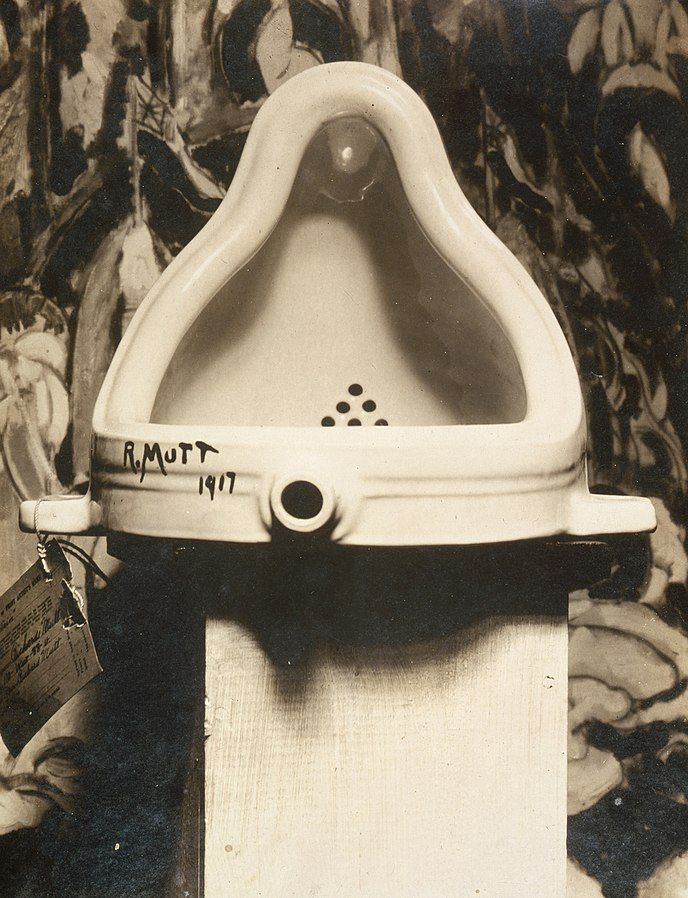
Many mid-twentieth-century art movements, such as Pop Art, became obsessed with the mass production and consumption of products, either completely rejecting this socio-economic crisis or buying into it.
In both cases, the use of new technologies for making contemporary art was explored and led to artists increasingly using machines and manufactured products to make art.
Two of the earliest examples of pre-digital computer art are the computer-generated motion graphics that John Whitney Sr. made with old WWII Turing machines in the 1950s and the "machine drawings" that artist Desmond Paul Henry produced using WWII bombsight analog computers. Whitney became a film and advertising motion graphics pioneer, and Henry's machine-made drawings won him an art prize in 1961 that launched his artistic career.
When digital art started
Digital art defines a broad field of activity, such as digital photography, digital imaging, digital animation, and computer interactivity. Digital art is variably referred to as electronic art, computer art, computational art, new media art, multimedia art, internet art, digital installation art or immersive art, CGI (computer-generated graphics), and digital illustration.
Let's discuss some of the most important developments in digital art history that have brought us to where we are today. It's awe-inspiring to see how digital art and design have changed how we create, experience, share, and buy artwork.
Drawing on an interface: design software
One field that has become synonymous with digital art is graphic design. Before the advent of design software, graphic designers worked with printing presses, type-setting machines, paper, ink, glue, and paint.
One of the first recorded instances of vector art drawn on a screen was seen in a surprising and top-secret place in the mid-1950s: a diagnostic program developed by IBM and MIT for SAGE (Semi-Automatic Ground Environment) - a multi-billion dollar US Air Force computer system that was developed to intercept potential Soviet attacks. When the diagnostic ran successfully, a line drawing of a pin-up girl would display on the CRT screen.
Discover the Elegance of Art Deco
Embark on a journey through the glamorous world of Art Deco. Learn about its history, influence, and how to incorporate its distinctive style into your designs.
However, the first complete design software was a program called Sketchpad, written by pioneering computer scientist Ivan Sutherland in 1963. Sutherland was inspired by the Memex concept described by Vannevar Bush in 1945, a digital file-sharing system that we now know as the Internet.
Sketchpad formed part of Sutherland's PhD at MIT and showed how human-computer interaction (HCI) could be used for digital art and technological purposes. The user could draw on the computer interface using a light pen - yep, digital pens came before computer mice!
His program is seen as the ground-breaking predecessor of CAD software and object-oriented programming. Even in 1987, the computer scientist and Apple Fellow Alan Kay (formerly Xerox PARC and Atari, later Walt Disney Imagineering and HP) said Sutherland's work was probably the most important thesis ever done. At that time (25 years later), Kay said it was still impossible to find something as good as Sketchpad on the market.
Sutherland's work also impacted another important invention, the On-Line System (NLS), a collaborative computer system developed by Douglas Engelbart at Stanford University's Augmentation Research Center with support from the US Air Force and NASA. It was famously presented at "The Mother of All Demos" video conference in 1968.
Kay and his teams saw the development of the first font editor, painting programs, easy-to-use desktop computers, animations that were precursors to video games, multiple windows GUI (graphical user interface), and simple object-based programming languages. The most remarkable part about Kay's research and work is that his teams tested and created their computers with the help of children, teaching them to code their programs in the Smalltalk coding language he created.
Richard Williams, an electrical engineering faculty member at the University of New Mexico, created a computer program he called ART1 in the same year Engelbart presented the NLS (1968). His computer program was specifically made for artists to create artworks using computers and dot-matrix printers without needing to code. One of the artists that used ART1 (and later co-developed ART2) was Katherine Nash.
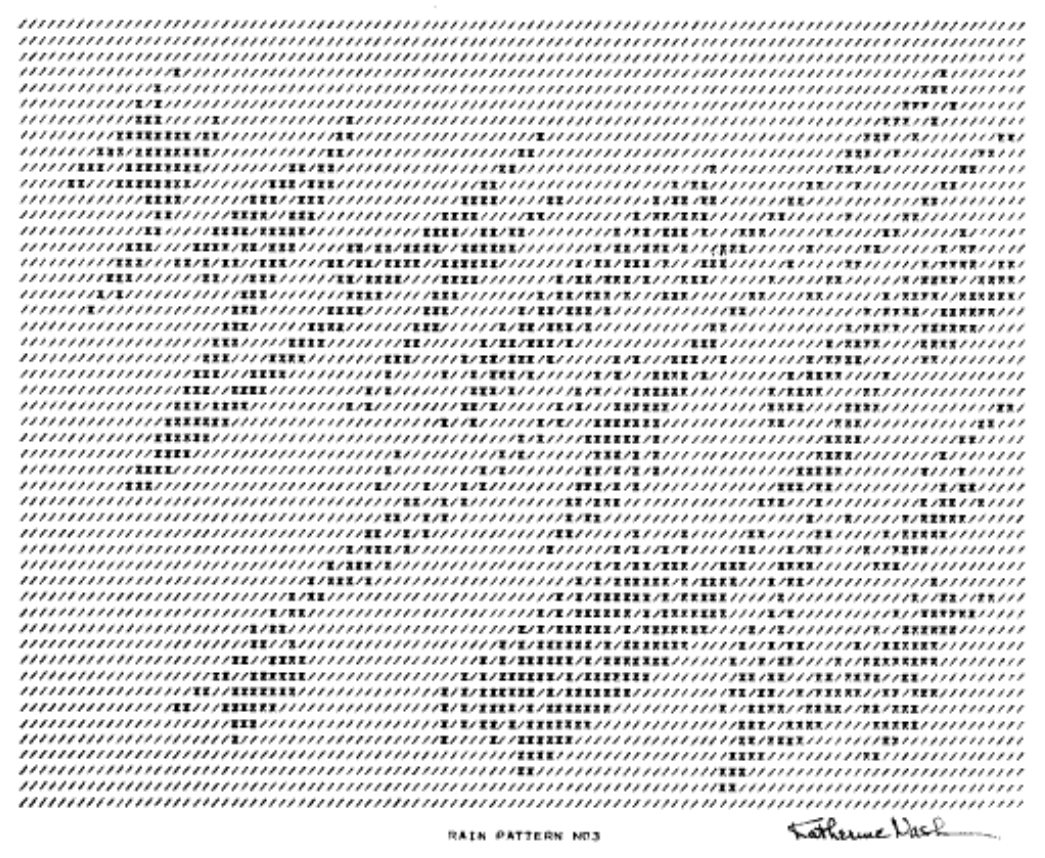
Later, computer drawing programs entered the mainstream:
- SuperPaint (1973) by Richard Shoup at Xerox PARC had a layers feature and was used to create graphics and animations for TV and a NASA project.
- MacPaint (1984) was released by Apple as a raster drawing program, while MacDraw (1984) was its vector drawing equivalent. These programs were based on earlier versions created for the Apple Lisa computer.
- ProPraint (1985) was used by Pop Artist Andy Warhol on a Commodore Amiga 1000 as part of the new computer's marketing campaign.
- Windows Paint (1985) was released. This raster image drawing software probably introduced most of us to making computer art!
- Aldus SuperPaint by MacIntosh (1986) was a combination of MacPaint and MacDraw and could be used to draw bitmap and vector graphics.
- Adobe Illustrator (1987) vector drawing program using Bézier curves was first released.
- Photoshop (1988) raster drawing and photo-editing program was sold to Adobe Systems for use on MacIntosh computers. Adobe Photoshop was first released in 1990.
- Aldus FreeHand (1988) vector drawing and desktop publishing software was first released. It was eventually completely replaced by Adobe Illustrator in the early 2000s.
- CorelDraw (1989) vector drawing program was first released for Windows. Corel also released other creative software as a full suite of applications.
- Xara X (2000), formerly ArtWorks and CorelXARA, was re-released by its original owner.
In 1986, well-known Pop artist David Hockney created digital paintings using a Quantel Paintbox for the BBC series, Painting with Light. The Paintbox was a drawing surface that enabled the user to draw computer graphics directly onto the television screen without transferring it to another medium, such as film. Hockney has continued making the most of digital technology for his art, later using a Wacom tablet and an iPad to create digital paintings.
Quantel Paintbox was also used in combination with the Bosch FGS-4000 hardware and 3D animation graphics program to create innovative computer-generated graphics for the music video of Money for Nothing by the Dire Straits.
Computers as artists: drawing machines and AI
The researchers at Bell Telephone Laboratories (Bell Labs for short) made many discoveries that led to the increased use of computers for communication and art. One of these researchers, A. Michael Noll, was already experimenting with making digital images and animations in 1962. He exhibited his computer artwork alongside fellow Bell Labs researcher Bela Julesz in 1965.
At the intersection of science, maths, philosophy, and art, Frieder Nake and Georg Nees also held an exhibition of their computer art in 1965. Credited as two of the first artists to create algorithmic art, Nake and Nees produced automatic computer-generated drawings using programming and flatbed plotters. Plotters were large drawing machines that could accurately create maps and technical drawings.
Nake was also one of the artists featured in the ground-breaking, multi-disciplinary exhibition Cybernetic Serendipity (1968), an important show in the UK and USA that helped spread ideas and images of computer art in the 1960s. The exhibition, curated by art critic Jasia Reichardt, led to the formation of the Computer Arts Society in Britain and gained a global reach.
Another important work featured in the exhibition was an interactive sculptural installation by polymath Gordon Pask, Colloquy of Mobiles (1968). The installation featured multiple moving parts (or robots, if you will) that interacted with each other with light and sound at random intervals. The audience could also interact with the sculptures and change how they responded.
In the same year that Cybernetic Serendipity was exhibited, the ART1 drawing software was created, and Engelbart presented the NLS (1968), the celebrated artist Harold Cohen wrote his first computer program as a break away from his artistic career and to 'learn something new.' At first, his work on computers had nothing to do with art, but computer programming began to lead him in a new artistic direction. In 1972, he created AARON: an AI art machine.
To be more precise, AARON was a collection of computer programs that Cohen wrote to answer the question: What are the minimum conditions under which a set of marks functions as an image? This became his main project for four decades until his death in 2016 and made AARON the longest-standing AI art project.
What's important about Cohen's work is the collaborative relationship between himself and AARON. The artist was using artificial intelligence to create masterpieces that he could probably never have imagined. Many of the works were hand-colored by Cohen and painted on walls or textiles.
Simulated worlds: multimedia and VR
Experimental filmmaker Stan VanDerBeek worked with Ken Knowlton from Bell Labs to create computer-generated animations in the 1960s. This culminated in one of his works, Poem Fields (1964 - 1968), which features pixel-based animated text created with Knowlton's programming language.
In 1969, Fluxus artist Allan Kaprow put together a "tele-happening" called Hello. This work featured 27 stacked televisions broadcasting from four different locations. Kaprow acted as the TV producer and switched the channels as the screen participants followed scripted prompts. This work formed part of a larger work for broadcast television, The Medium Is the Medium (1969), in collaboration with five other participating artists.
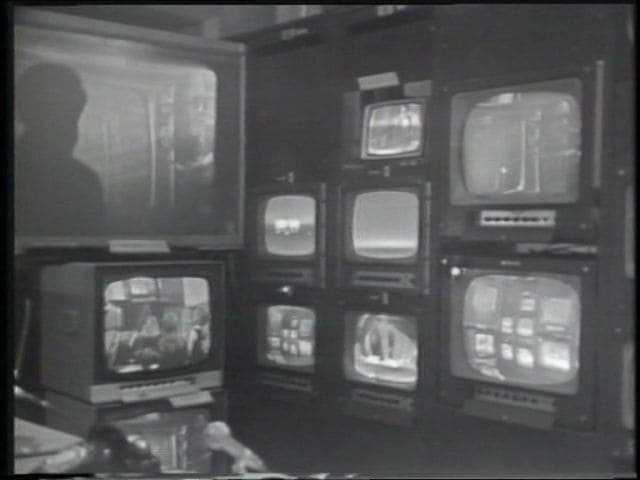
This work showed the future possibilities of remote communication (and miscommunication!), especially for artistic purposes. One of the artists, Nam June Paik, is widely considered to be the first video artist. He used the Sony TCV-2010 (a consumer video tape recorder launched in 1965) to create and splice recordings and display them as artworks. This put into motion one of the most influential movements in contemporary art (and society) today: video art.
Note that television and video recording were still analog; digital television was only introduced in the 1990s. But the widespread access to video is a critical component of digital art.
Other pioneers of video art from the 1960s through to the 2000s include Vera Frenkel (Canada), Valie Export (Austria), Joan Jonas (US), Shigeko Kubota (Japan/US), and Kate Craig (Canada).
With the widespread adoption of desktop computers in homes and the launch of the World Wide Web in the 1980s, digital art truly came into its own. Many people could upload, download, and share multimedia files via internet protocol (IP) on their personal computers. The art of the 90s saw a massive upsurge in digital video manipulation, digital image editing, DJing and VJing, and all kinds of immersive and interactive audio-visual experiences created with personal computers and the internet.
In 1983 (the same year that the early internet called ARPANET was launched), as part of the Electra exhibition in Paris, computer artist Roy Ascott set up 14 network nodes to create a fictional story with artists across the globe.
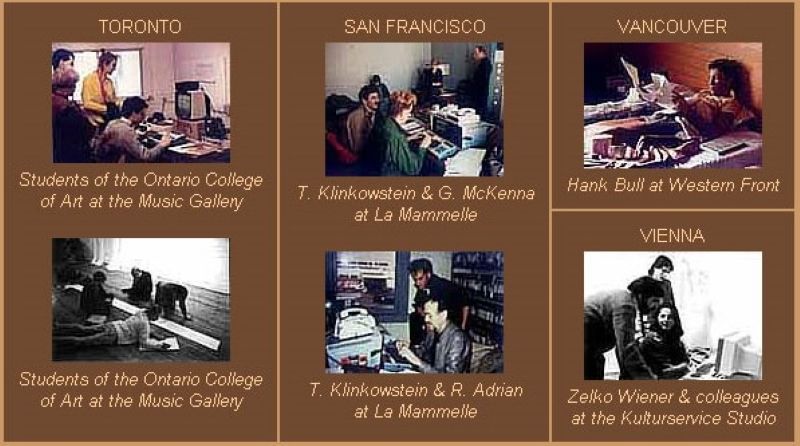
Ascott wanted to put his concept of "distributed authorship" into practice. This work, La Plissure du Texte ("The Pleating of the Text"), functioned like an early internet-based narrative game, with each player assigned a character who could change the story's trajectory based on their input. This was one of the first digital artworks that showed how the internet could be used as a medium for telematic art and remote cross-collaboration.
Brazillian multimedia artist, Eduardo Kac, started experimenting with holography in 1983. His "holopoems" were three-dimensional text works that viewers could view from different angles. While Kac was not the first artist to explore holography, he was one of the influential artists who experimented with diverse media in the emerging digital age, including Minitel's videotex, fax, robotics, and genetics.
![Viewers experiencing the holopoem QUANDO? [WHEN?] by Eduardo Kac, 1987/88.](https://www.linearity.io/blog/content/images/2022/12/eduardo-kac-lrg.jpg)
Holographic artworks not only re-thought the dimensionality of text but were also early forms of virtual reality created by 3D artists. These works were at the threshold of painting techniques (using light) and artwork digitization.
Artist Ellen Sandor's multimedia experimentations with the art group (art)n in 1983 led to their invention of "PSCHolograms" - digital autostereograms created using photography, holography, sculpture, and computer graphics. These sculptural installations provide 3D images for viewers to experience artworks and scientific phenomena, such as molecular structures, in ways they've never been seen before.
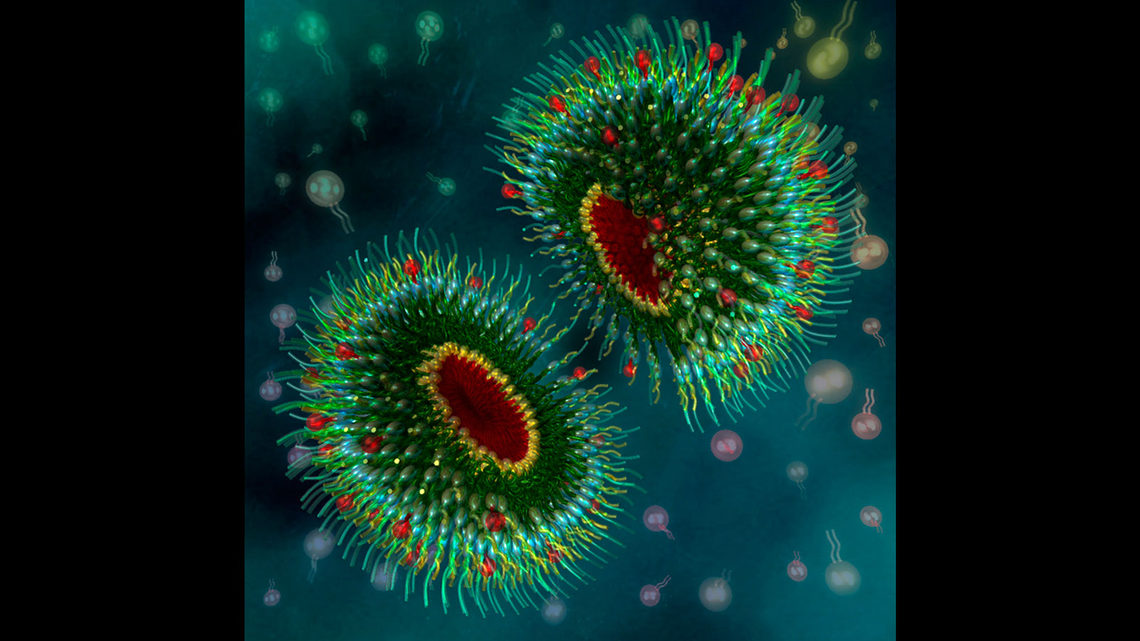
In modern terms, virtual reality (VR) is arguably any multi-sensory experience with a three-dimensional image. Early VR experiences include the Sensorama machine invented by filmmaker Morton Heilig in the 1950s (patented in 1962), as well as Head Mounted Display (HMD) and military flight simulations from the 1960s.
But it wasn't until 1968, with Ivan Sutherland's Sword of Damocles, that 3D computer-generated graphics and head tracking were used for immersive experiences. These images were simple wireframes that could be navigated digitally using the cumbersome head-mounted hardware.
NASA's VIEW (Virtual Environment Workstation) of the 1980s was one of the pivotal projects that inspired later commercial VR headsets and sensory gloves that could manipulate digital objects and input data.
Computer artist Myron Krueger took a different approach to VR and augmented reality (AR), beginning in 1969 with GLOWFLOW, by creating immersive rooms and projections emphasizing the viewer's experience of interacting with computer technology.
Artist, engineer, and inventor Ken Goldberg has researched networked human-computer interaction since the 1990s and was the first to create "telerobots" using the internet. His most notable works include Telegarden (1995 - 2004) and Legal Tender (1996).
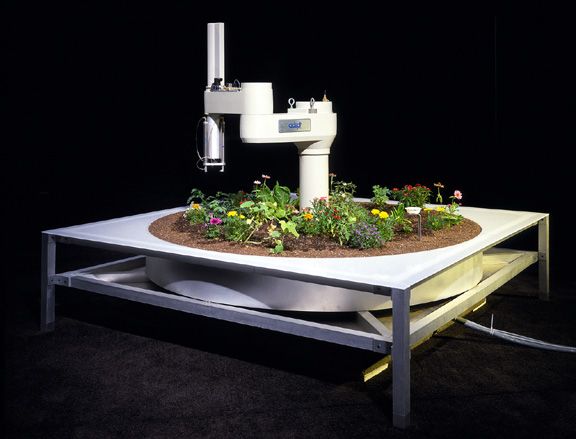
Telerobotics enable viewers to remotely (and voyeuristically) occupy space via robots performing tasks on their behalf. His work raises questions about materiality and the moral, ethical, and legal implications of the overlapping of the virtual and real.
The state of digital art today
The continuous advancement and increasing accessibility of digital technology are breaking down barriers to art-making. With more access to creative tools and learning about art, more people are enabled to live out their creativity. The internet, coupled with digital devices, is the driving force behind this increase in digital artists (whether hobbyists or professionals) worldwide.
Digital art today is looking for more ways to bring the digital world into the real world and vice versa.
Assisted art: smart tools for artists
In the early 2000s, L.A. graffiti artist TemptOne was diagnosed with Lou Gehrig's disease (ALS) and became completely paralyzed. The EyeWriter was developed to enable him and other artists like him to create digital art using only their eyes.
This groundbreaking work was created by a group of independent artists and researchers and is entirely open source, meaning that anyone can download the instructions and software from the internet to build their own EyeWriters and help paralyzed artists make art again.
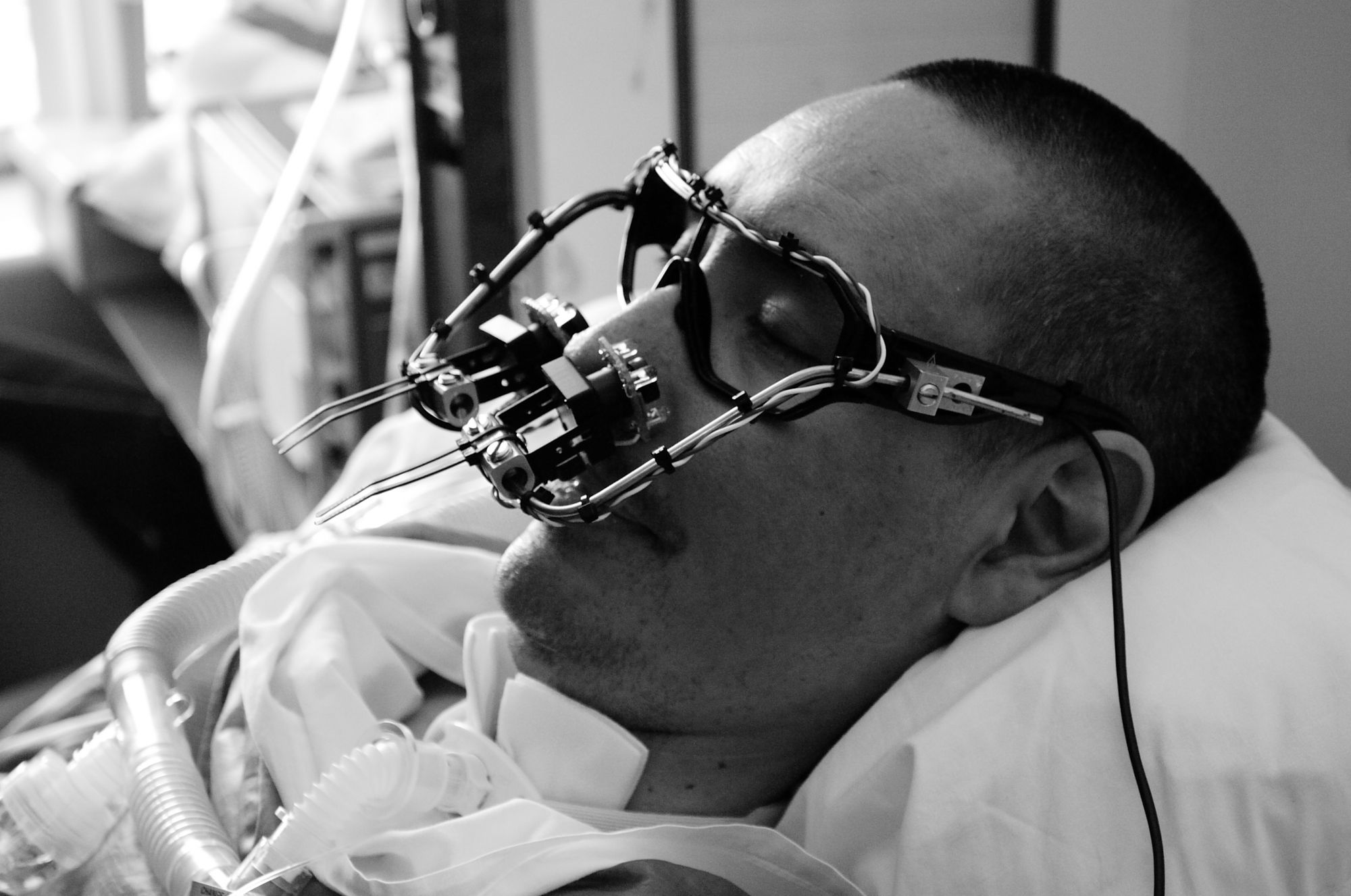
The DIY and open source trends of the twenty-first century were catalyzed by the availability of tools and software that were previously only accessible at universities and large corporate companies or for the fortunate few who could afford the high cost. Laser cutting and 3D printing are two technologies that have become widely accessible for creative work.
Laser cutting and engraving were invented in the 1960s, but it has become an increasingly popular medium for graphic designers and industrial designers alike. With smaller, cheaper laser cutting machines becoming available in the past two decades, many creatives have started using these machines to translate their digital designs into the real world using vector software. Laser cutters also empower designers to bring their designs to life as consumer-friendly functional products.
3D printing has captured imaginations and started a maker movement of people who design and fabricate their own tools, parts, and machines. Though 3D printing has been around since the 1980s, it was only in 2006 that the first commercial 3D printer became available. In 2018, the first 3D-printed tool fabricated in space was made using a zero-gravity 3D printer. Astronaut Barry Wilmore needed a ratchet wrench, and NASA emailed him the file so he could print it!
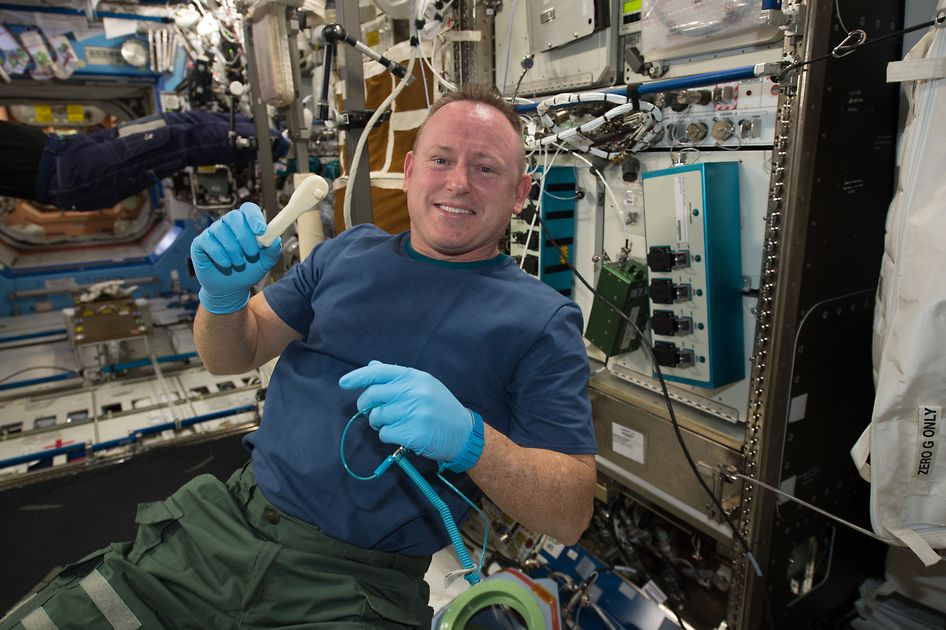
As can be expected, many artists have been experimenting with 3D printing as a medium for their work. Cosmo Wenman makes 3D scans of famous and priceless sculptures and shares the open source 3D print files on the internet for anyone to print their own Rodin or Michaelangelo. Monika Horčicová uses 3D-printed human bones to create uncanny skeletal structures that force viewers to look at life and death differently.

Another exciting development is smart pens. These ink pens with built-in computer capabilities enable you to draw on a piece of paper and create digital artwork simultaneously. The idea behind smart pens is to make the digital imaging process as seamless and natural as possible. Some smart pens can save up to 1000 pages of work that can be edited digitally later.
Smart devices are everywhere, and they're affordable. With smartphones, the digital world lives in our pockets. We can find digital images of almost anything using Google Chrome or other browsers.
Then, we have image editing and digital animation software at our fingertips and can whip up a cool meme while waiting for the train. These are immensely powerful tools for creativity because they offer immediacy and make it easy for anyone to dabble in digital art and design.
Creating scalable vector designs is equally accessible. Back in the 60s, with Ivan Sutherland's Sketchpad software, vector drawings could only be done in an on-campus lab on a massive roomful computer. Today, you can carry a 500g iPad and Apple Pencil with you and draw amazing pictures anywhere using software like Curve (formerly Vectornator), then share it with your team online or upload it to social media.

The latest developments in AR and VR have opened up new ways to experience digital art and make it easier than ever to be a 3D artist. VR sets and AR apps are widely available and affordable (you can even build your own Google Cardboard headset), enabling users to see cities they've never been to, famous artworks, museum exhibitions, and landmarks.
VR and AR have also presented new opportunities for education with 360-degree panoramic views and game-based learning. One of the main concerns in VR art is the agency of digital bodies in terms of identity, virtual abuse, and ethics.
Digital artist Marilène Oliver uses VR technology and detailed picture content of 4D medical images such as MRT and CT scans. If the viewer holds the virtual body's hand during the VR experience, the body breathes, and a human voice sings softly. These extensive computer images help reconnect viewers to the human body in the virtual world.
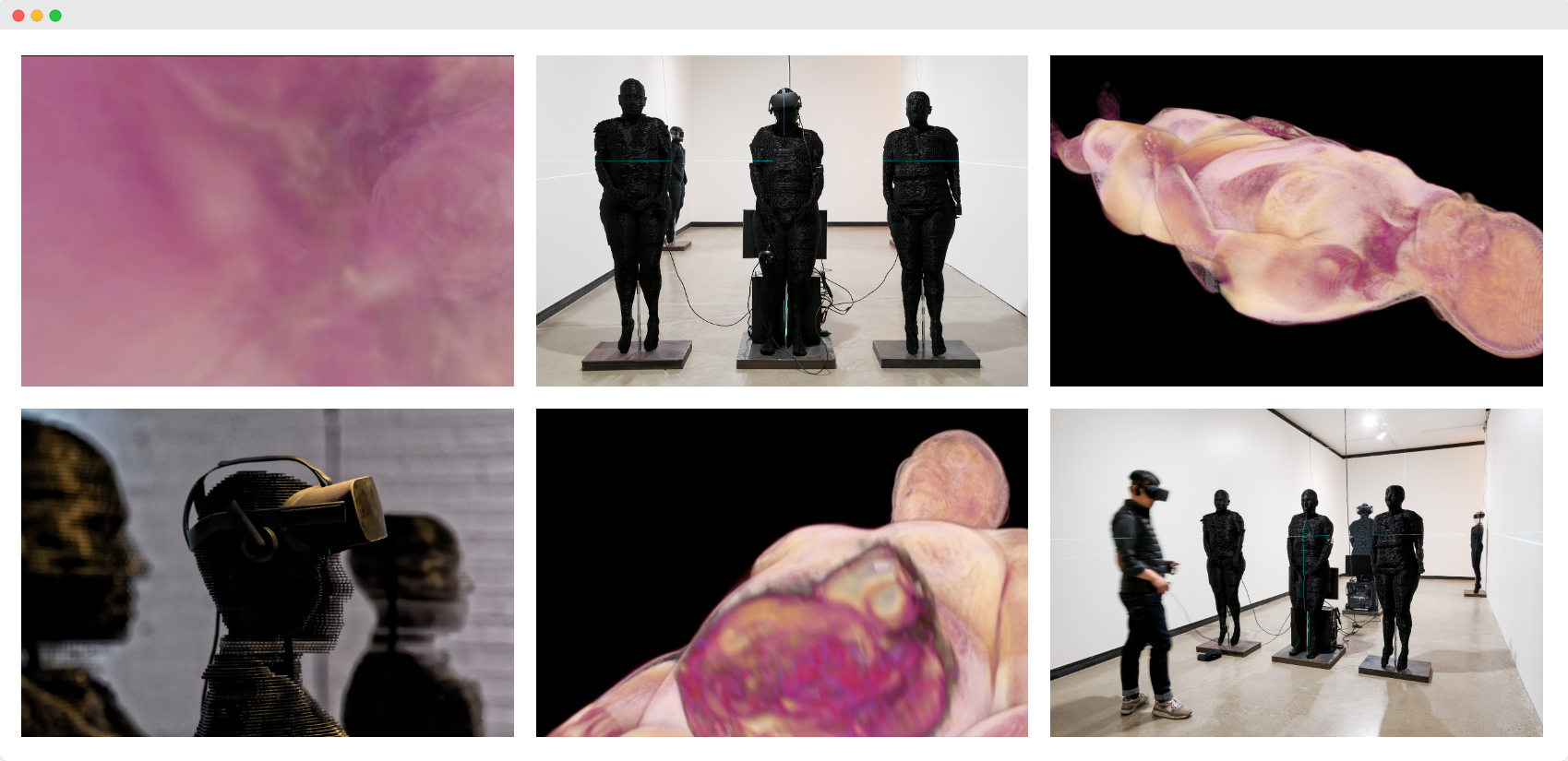
Deepfake: blurring reality and metaverse
"Deepfake" is a neologism made by mixing two phrases: "deep learning" and "fake." What is great about this term is that it brings across the idea that technology can successfully blur the lines between reality and simulation. Swapping faces, rewording historical scenes, or skillful disco dancing can all be artistically rendered using deepfake technology.
Whereas deepfaking has been used for creativity and entertainment, it also presents a threat to human rights in terms of consent, misinformation, misrepresentation, cyberbullying, and other legal issues such as fraud, copyright, and ethical considerations.
Ready to create brand assets that pack a punch?
Visit our Academy for free art design courses.
In many ways, it confirms the fears around AI picture generators: if we can’t tell the difference between real footage and fake news, how will we know what's true? We rely on digital pictures to know what's happening in the world, and there's a war of misinformation in the media.
YouTuber Shamook (their true identity unknown) uses deepfake technology to create "new alternate realities," mostly placing other actors in the starring roles of well-known movies. Their work is so convincing that they were offered a job at Lucasfilm's effects division as a Senior Facial Capture Artist after Shamook improved Luke Skywalker's facial features in an episode of The Mandalorian (2019 -). But Shamook also uses their Twitter account to bring awareness to the dangers of deepfakes.
One of the proposed solutions to the 'deepfake problem' is non-fungible tokens (NFTs). Let's think back to the concepts of the removal of the artist's hand and distributed authorship that we discussed earlier. We can see that the digitization of artwork and internet distribution makes it very difficult to retain authentic versions of files and their ownership. Artists have tried several strategies to avoid digital art theft.
Blockchain technology, like NFTs, encrypt file versions at particular points that can't be reversed or deleted. This means that any visual picture content (or any content, for that matter) and its ownership can be traced back to its original, thereby verifying its authenticity. This is of great benefit to digital artists and other creators in the digital world, but most importantly, it could protect viewers from inauthentic content and AI-powered deepfakes.
The metaverse is another portmanteau that has become a buzzword - "meta" and "universe" together describing the concept of a layered reality or the overlapping of three-dimensional virtual and reality. Besides the potential for humanizing online interactions and transactions, the metaverse can be an excellent marketplace for digital art. It's still being defined and problematized, as many facets and governance issues are cropping up daily. The metaverse is also not as widely interconnected as it should to truly be another layer to real life.
So, when it comes to AI imaging, it's understandable that some artists see these extensive computer images as a threat to or mockery of true artistry. The idea of image generators and artificial intelligence art auctions sits uncomfortably between the virtual and real, but these are essentially crowd-sourced auto-edited artwork.
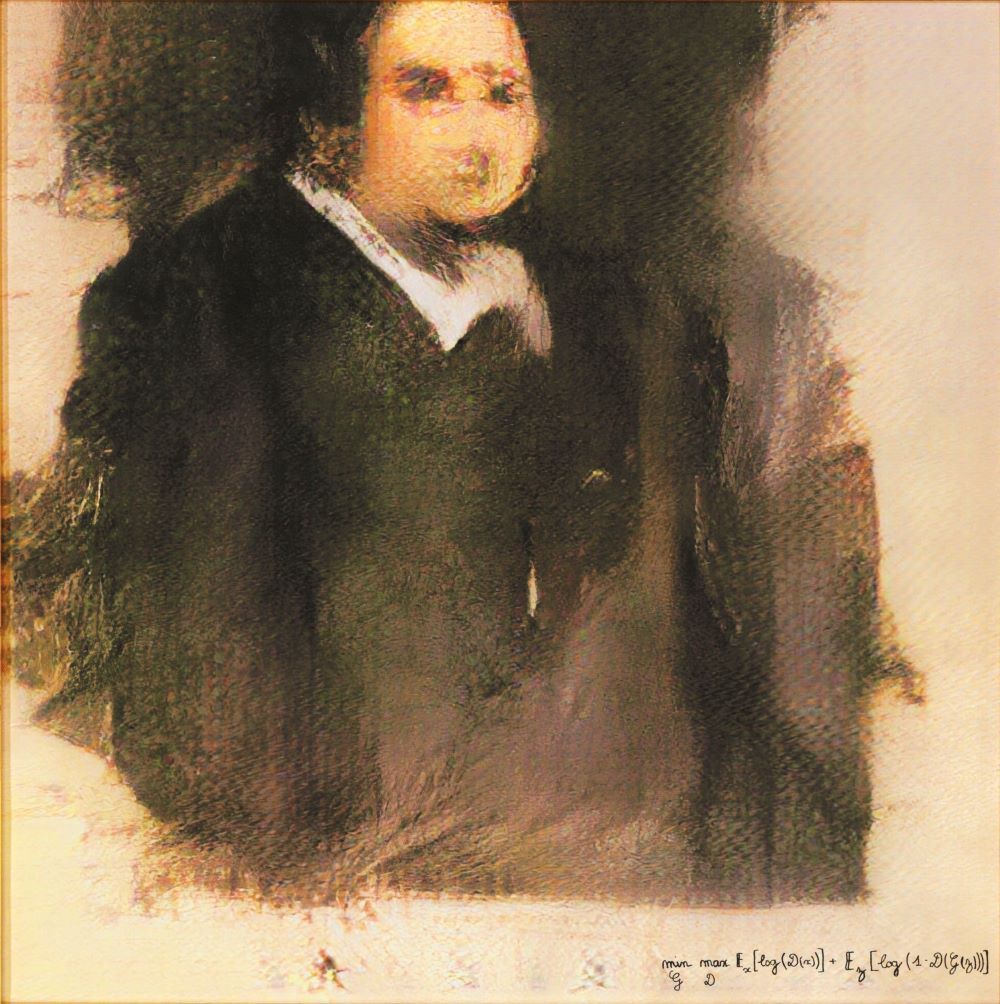
Buy online: Platforms for digital art
Now, more than ever, there are so many platforms for digital artists to create, promote NFT, and sell their work. From free personal blogs and social media accounts to digital illustration apps and designer marketplaces, artists and illustrators can carve out their own niche on the web.
Digital platforms such as Dribbble and Kunstmatrix also allow artists to display their work in multiple locations without the courier costs and risks involved. As mentioned in the previous section, VR, AR, and NFT platforms have presented many more opportunities for artists and NFT marketing agencies to share and distribute their work.
The future of digital art
It's difficult to grasp just how big digital art is and to predict future developments based on what we see now. A few questions about the future of digital art come to mind:
- Will the metaverse keep expanding, or will it fold?
- Will NFTs give artists the royalties they deserve as their artworks gain value and prestige?
- Will we find better ways to use AI technology and protect people from misinformation?
- What new technologies can we look forward to as creators?
We also asked a handful of professional digital creators about their own predictions for the future of digital art and design.
Metaverse and extended reality (XR)
Based on predictions some 20 years ago, we all thought we'd be getting around in self-driven hovercars by now! The same goes for the metaverse: it's still very speculative, and the technology is catching up to the dream. So, it's hard to tell whether it'll be as successful as hoped.
With the current crisis of falling cryptocurrencies (due to the crash of FTX, a crypto exchange that handled about a billion dollars each day) - which could be part of the stabilizing process - overall sentiment about virtual reality is a bit low.
Yet, people spend billions of dollars on virtual goods every year, proving a highly viable virtual space market for creators and marketers alike.
Extended Reality (XR) is the broad term for VR, AR, and MR (mixed reality) experiences. Digital artists and marketers should look into ways to create assets for the new spaces opening up in the next few years as XR is becoming increasingly accessible. However, according to a study by PEW research, 46% of respondents felt that the metaverse won't be ready by 2040, listing a few concerns:
- XR won't be seen as useful for daily life.
- People prefer remaining immersed in reality.
- People are worried about capitalistic surveillance and authoritarian abuse of power in digital realms.
- There are major concerns about the harmful effects of completely immersive XR, such as exploitation, increased loneliness, anti-social behavior, and commercialization of basic human activities.
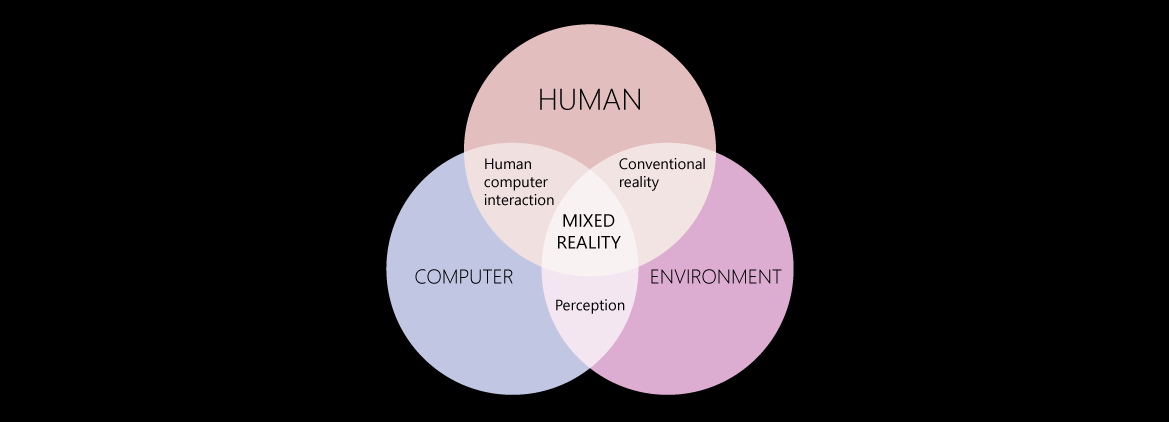
Of course, the metaverse isn't all bad. The ability to have dynamic XR experiences can have positive socio-economic, educational, medical, and environmental effects. Think of the advanced 3D scans and surgeries that can be done remotely or taught by some of the smartest people in the world in an immersive, real-time classroom environment.
Imagine journeying to destinations, enjoying concerts without traveling (saving on costs and emissions), and trying on designer clothes that you wouldn't normally have access to.
NFTs
Regarding the issues around ownership, authenticity, and fair royalties for creators, NFTs aren't quite there yet. Provenance tracking (the origins and exchanges of artwork) is baked-in, but not all currencies honor this.
In the future, there may be stricter governance around provenance to ensure that the original creators of digital content are always acknowledged and traceable. Additionally, the deepfake conundrum could possibly be solved with improved blockchain technology and NFT regulation.
However, the environmental impact concerns raised by cryptocurrencies, NFTs, and other blockchain technologies still remain a significant barrier to their widespread acceptance.
AI art
We've touched on AI art a few times in this article, and whereas we're not 100% convinced artificial intelligence has the best intentions for artists who make a living off of digital imaging, we're not ignorant of the potential future benefits of AI for art-making. As we've seen in the case of Harold Cohen and his collaboration with AARON, AI presents an opportunity for artists to train machines and produce surprising results.
New technologies to look forward to
New software and hardware are being released to facilitate XR experiences, and digital artists seem to be pretty positive about emerging technologies for creating digital art.
Illustrator Soodabeh Damavandi believes that digital art is the future of art: as we all shift to digital media daily, it'll soon be the primary design medium for artists. She feels that digital art software will be as simple as drawing with a pen on paper or even easier in the future.
Artist Jaye Kang echoes this sentiment:
With the rise of smart, immersive technologies, there will also be an increased demand for digital creators who can design interactive, animated assets for the digital world. In this sense, we predict that design and animation software will become even easier to use and will have a low learning curve for illustrators and designers alike.
Another exciting technology that we can look forward to - and has been experimented with for many decades already - is holography. As commercial devices for creating holographic images are becoming available, such as Hypervsn, digital artists have the exciting opportunity to explore the potential of this technology beyond eye-catching advertising displays.
Digital media education
Universities and other educational institutions are also not lagging behind the wave of emerging technology for digital arts, and we've already seen some really interesting degree programs and courses being offered:
- MA in Digital Art History and Computational Media at Duke University (USA)
- MA in Computational Arts at Goldsmiths University of London (UK)
- BA (Hons) Fine Art: Computational Arts at UAL (UK)
- Creative Computing BSc (Hons) at UCA (UK)
- MPhil in Computational Media and Arts at Hong Kong University of Science and Technology (CN)
Wrapping up
Computers have opened up so many possibilities for people to create and experience images, solve problems, learn, and generate new ideas. With the ubiquity of the internet, screens, and smart technology, digital art and design have become essential to navigating the world.
1968 was a pivotal year for digital art. A digital drawing software for artists was created (ART1), the first online system (NLS) for remote collaboration was demoed, Harold Cohen started coding, a ground-breaking exhibition of computer-driven art was held (Cybernetic Serendipity), and a 3D virtual reality headset was created (Sword of Damocles).
Digital art has always been a truly interdisciplinary field of research, having developed in engineering, computer science, arts, and philosophy departments. This makes it such an exciting field of activity to work in today, as artists have so much to give in building the virtual world that's inching more toward reality each year.
The recent developments in cryptocurrency and artificial intelligence have their own challenges, and many are skeptical of the future value these technologies will bring. But digital creatives have an essential role in experimenting with these and coming up with creative solutions.
NFTs can resolve the age-old problems of provenance and fair pay for artists, who have historically always gotten the short end of the stick when it comes to gallery fees and the true value of their work.
AI helps us to further investigate what art is. Is it human expression, or are there intrinsic characteristics of art that we have no control over? Artists are already seeing significant benefits to using AI for their work, whether for conceptualization and idea generation or as a personal assistant to automate tasks.
At Linearity, we lean more toward human-first digital design and art, but we're also interested in how digital arts keep developing with new trends and technology.
We'd love to hear your take on the future of digital art, so hit us up on social media or the Curve Community. If you haven't tried Linearity Curve yet, check it out today!
Jumpstart your ideas with Linearity Curve
Take your designs to the next level.
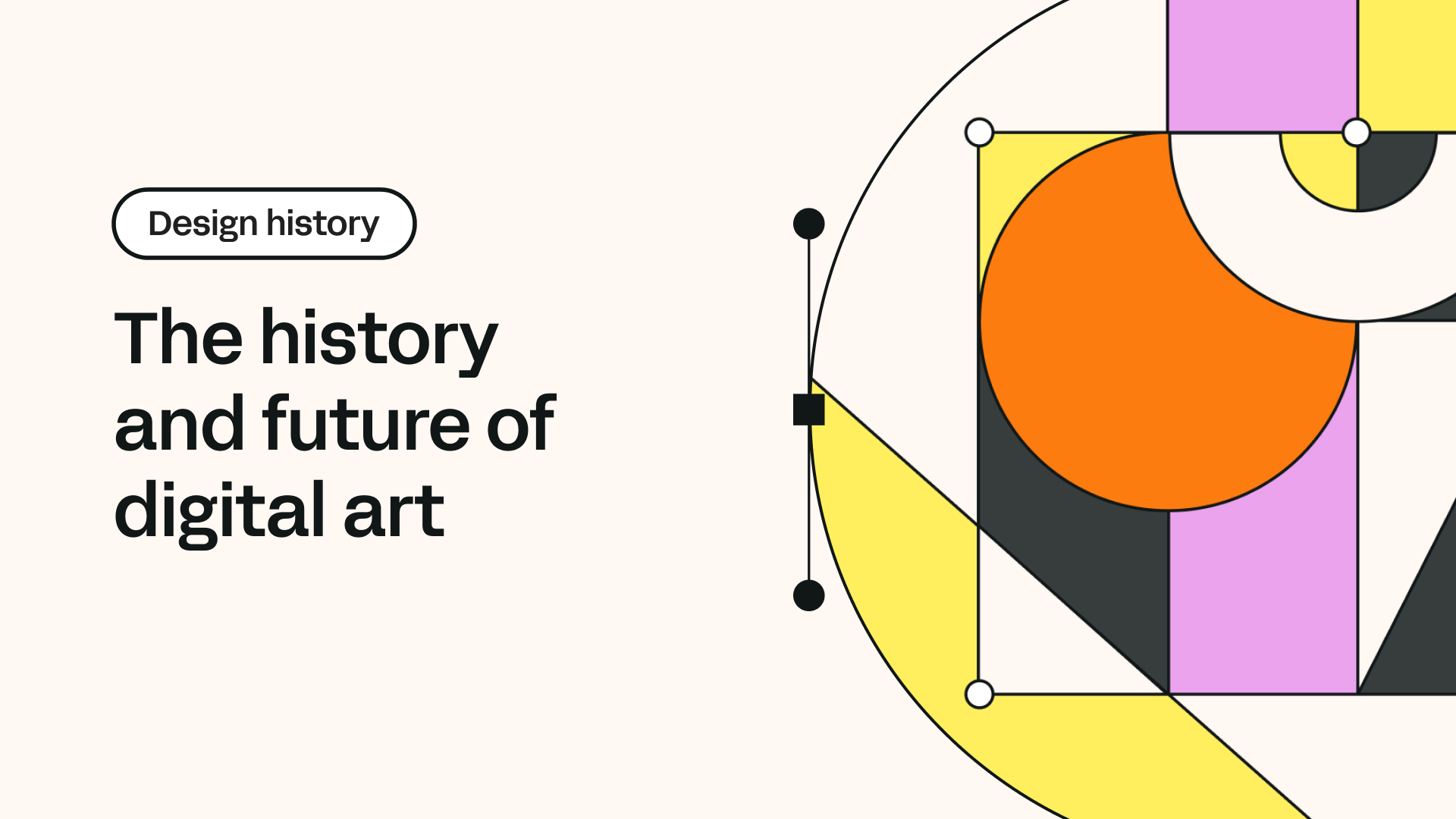
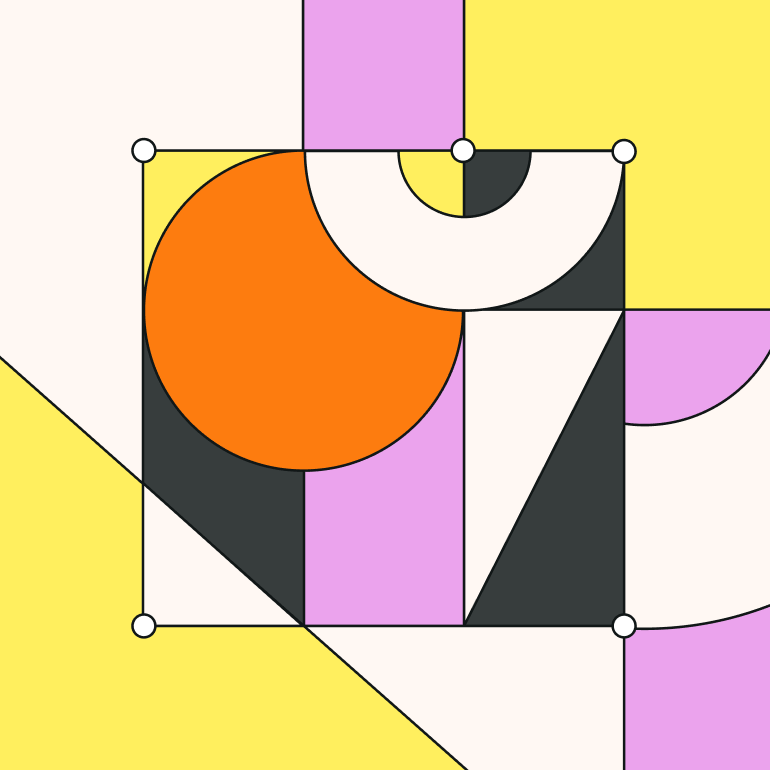
Share this!
Sharné McDonald
Sharné is a contributing writer to the Linearity Blog. She has 10+ years' experience in graphic design and marketing and holds a Master's degree in Art Education.


:quality(75))
:quality(75))


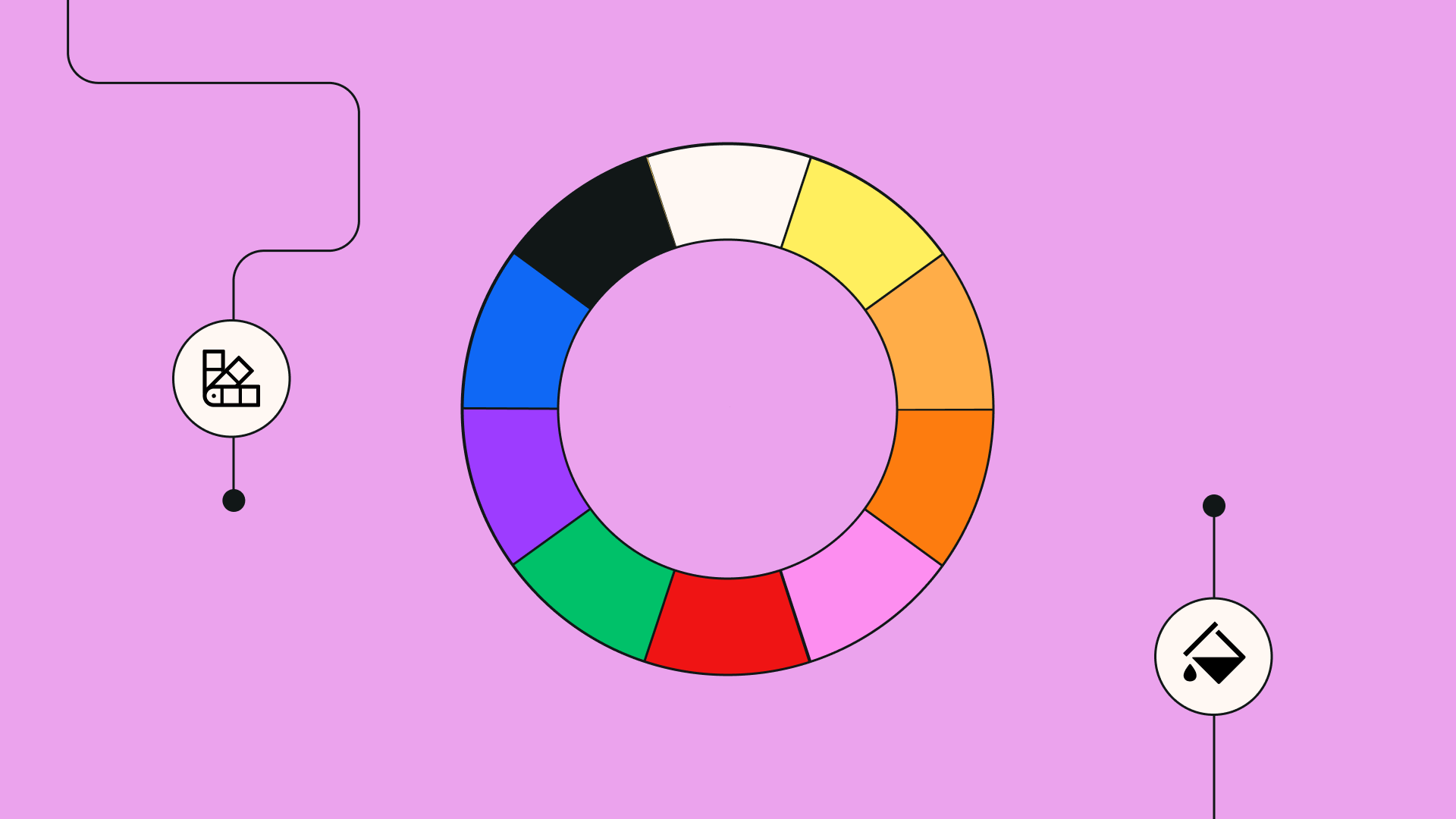
:quality(75))
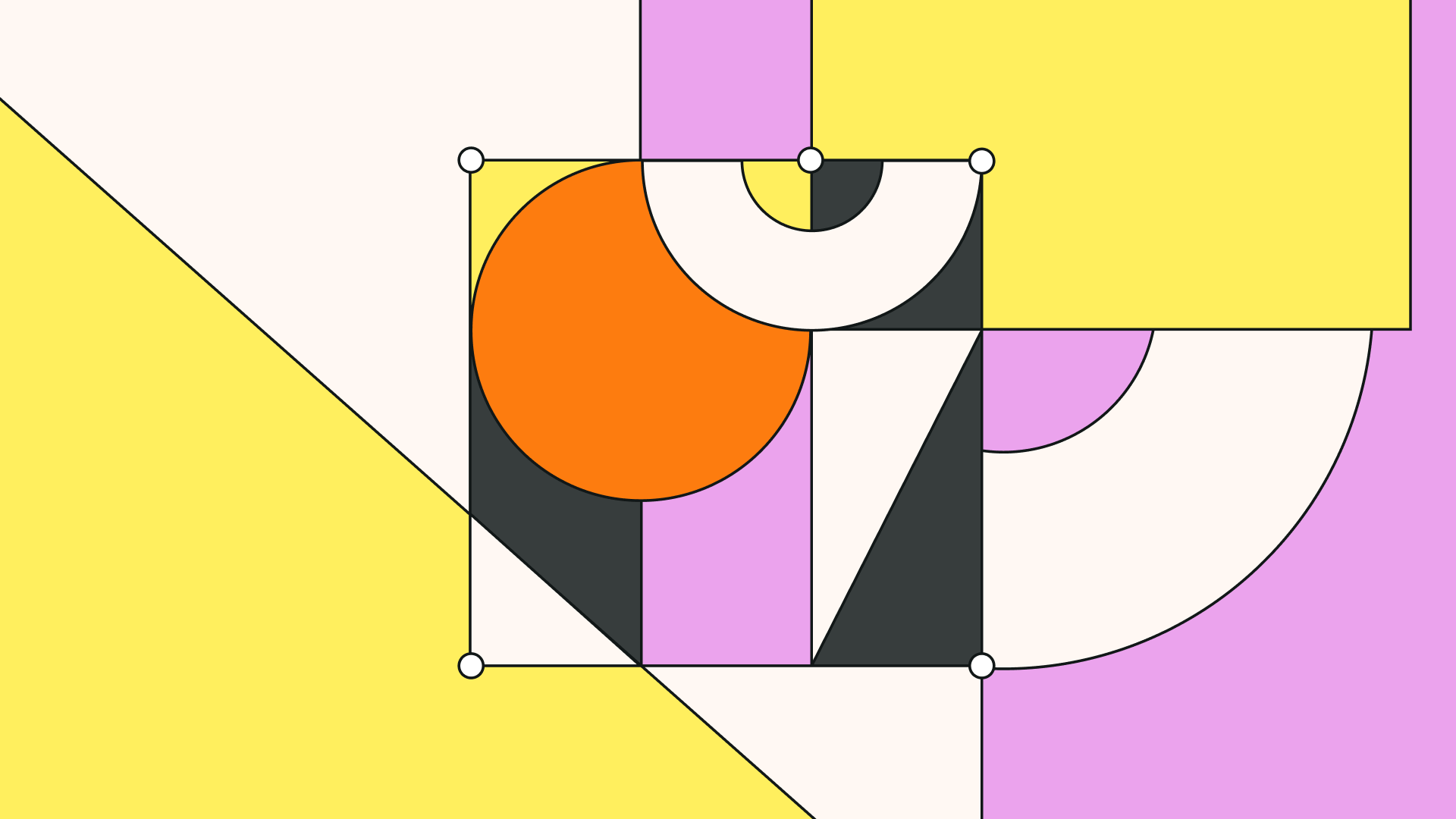
:quality(75))
:quality(75))
